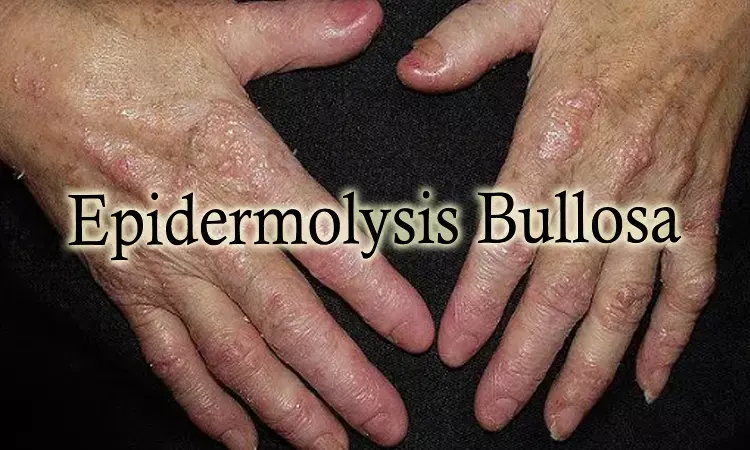- Home
- Medical news & Guidelines
- Anesthesiology
- Cardiology and CTVS
- Critical Care
- Dentistry
- Dermatology
- Diabetes and Endocrinology
- ENT
- Gastroenterology
- Medicine
- Nephrology
- Neurology
- Obstretics-Gynaecology
- Oncology
- Ophthalmology
- Orthopaedics
- Pediatrics-Neonatology
- Psychiatry
- Pulmonology
- Radiology
- Surgery
- Urology
- Laboratory Medicine
- Diet
- Nursing
- Paramedical
- Physiotherapy
- Health news
- Fact Check
- Bone Health Fact Check
- Brain Health Fact Check
- Cancer Related Fact Check
- Child Care Fact Check
- Dental and oral health fact check
- Diabetes and metabolic health fact check
- Diet and Nutrition Fact Check
- Eye and ENT Care Fact Check
- Fitness fact check
- Gut health fact check
- Heart health fact check
- Kidney health fact check
- Medical education fact check
- Men's health fact check
- Respiratory fact check
- Skin and hair care fact check
- Vaccine and Immunization fact check
- Women's health fact check
- AYUSH
- State News
- Andaman and Nicobar Islands
- Andhra Pradesh
- Arunachal Pradesh
- Assam
- Bihar
- Chandigarh
- Chattisgarh
- Dadra and Nagar Haveli
- Daman and Diu
- Delhi
- Goa
- Gujarat
- Haryana
- Himachal Pradesh
- Jammu & Kashmir
- Jharkhand
- Karnataka
- Kerala
- Ladakh
- Lakshadweep
- Madhya Pradesh
- Maharashtra
- Manipur
- Meghalaya
- Mizoram
- Nagaland
- Odisha
- Puducherry
- Punjab
- Rajasthan
- Sikkim
- Tamil Nadu
- Telangana
- Tripura
- Uttar Pradesh
- Uttrakhand
- West Bengal
- Medical Education
- Industry
Junctional epidermolysis bullosa associated with Kidney-Urinary Tract Involvement among men: JAMA

According to a new study published in the Journal of American Medical Association-Dermatology, Kidney and urinary tract infection involvement is a frequent complication in males with intermediate junctional epidermolysis bullosa (JEB) associated with variations in any JEB-associated gene. Further researchers found that injuries to the mucosal membranes and fragile, blistering skin are common in people with junctional epidermolysis bullosa (JEB), which can cause skin loss.
Patients experiencing junctional epidermolysis bullosa have significant morbidity due to kidney-urinary tract (KUT) symptoms, although the clinical course and severity range of the illness are poorly understood. Therefore, Laura Trefzer and colleagues undertook this study to investigate the genotype-phenotype correlations, KUT symptoms, diagnostic and therapeutic approaches, and outcomes in a large cohort of patients with intermediate JEB as a foundation for recommendations, prognosis, and therapy.
In this retrospective, longitudinal case series investigation, 99 individuals who were treated in a single dermatology department in Freiburg, Germany, who had been diagnosed with JEB based on clinical and genetic findings were evaluated over the course of 18 years (January 1, 2003, to December 31, 2021). From patients' medical records, clinical, laboratory, and molecular genetic characteristics were taken. Clinical traits, natural history, treatment of KUT symptoms, and genotype-phenotype correlations of intermediate JEB were the main outcomes.
The key findings of this study were as follows:
1. 99 (54%) of the 183 individuals with JEB were included in this group and had intermediate JEB.
2. 50 male and 49 female patients made up the cohort.
3. KUT involvement impacting various levels of the urinary tract was absent in none of the 49 female patients and 15 of the 50 male patients, resulting in a male prevalence of 30% and an overall prevalence of 15%.
4. The average age at which KUT symptoms first appeared was 6.9 years.
5. 13 years were the median amount of time after the diagnosis of KUT involvement.
6. At least one missense or splice site genetic variation was present in patients with laminin 332 deficiency or integrin 4 deficit, resulting in residual expression of laminin 332 or integrin 64, respectively.
7. The level of skin involvement did not correlate with the severity of KUT problems, but rather with the damaged protein.
In conclusion, physicians should use multidisciplinary and customized diagnostic and treatment approaches to handle these consequences. Physicians and patients with intermediate JEB should be aware of the potential for KUT involvement. Given the rarity of this condition, multicenter investigations are necessary before making broad recommendations.
Reference:
Trefzer, L., Schwieger-Briel, A., Nyström, A., Conradt, G., Pohl, M., Miernik, A., & Has, C. (2022). Kidney–Urinary Tract Involvement in Intermediate Junctional Epidermolysis Bullosa. In JAMA Dermatology. American Medical Association (AMA). https://doi.org/10.1001/jamadermatol.2022.2885
Neuroscience Masters graduate
Jacinthlyn Sylvia, a Neuroscience Master's graduate from Chennai has worked extensively in deciphering the neurobiology of cognition and motor control in aging. She also has spread-out exposure to Neurosurgery from her Bachelor’s. She is currently involved in active Neuro-Oncology research. She is an upcoming neuroscientist with a fiery passion for writing. Her news cover at Medical Dialogues feature recent discoveries and updates from the healthcare and biomedical research fields. She can be reached at editorial@medicaldialogues.in
Dr Kamal Kant Kohli-MBBS, DTCD- a chest specialist with more than 30 years of practice and a flair for writing clinical articles, Dr Kamal Kant Kohli joined Medical Dialogues as a Chief Editor of Medical News. Besides writing articles, as an editor, he proofreads and verifies all the medical content published on Medical Dialogues including those coming from journals, studies,medical conferences,guidelines etc. Email: drkohli@medicaldialogues.in. Contact no. 011-43720751


